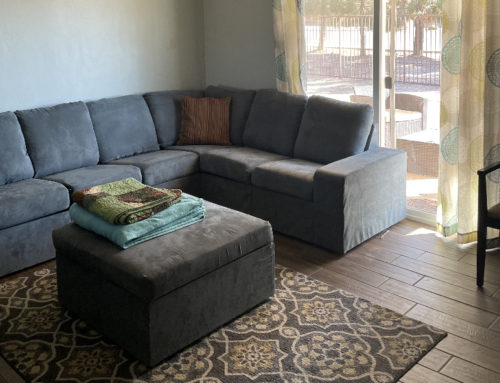Before coming to residential treatment as a therapist, I spent 10 years as a crisis worker in two emergency room hospitals. My job was to do mental health evaluations on teens, and adults to determine whether or not they qualified or needed to go to a psych unit. Often, I did the follow up therapy after they had been discharged from the psych unit. I have spent thousands of hours evaluating clients both before and after their stays in psychiatric units in hospitals. I am telling you this because I want to make a comparison between residential treatment and stays in psych units. Typically, if a person is “cutting, having thoughts of suicide, struggling in relationships, or having just attempted to take their life”, it would have not been the first time. Most of these high risk behaviors occur more than once. I dare say that over a two year span, I evaluated the same person twelve times in the same small Utah hospital emergency room. There was literally no end to the mayhem, despite hours and hours of intensive outpatient therapy. We could not stop this person’s pattern. Some people believe that the only treatment is in outpatient settings and in the hospital. This is simply not true. Residential treatment is a viable option for some people to consider. Residential treatment can be the finish line to endless nights in an ER, or multiple short stays in a psych unit, or outpatient therapy that is not working.
In Utah, a typical stay in a psych unit lasts 4-7 days. In California, the average length of stay in a psych unit is 11 days, according to Quanbeck, Tsai, Szabo. Primarily, there are two reasons for placing a person in a psych unit. One, the placement is to get quick access to a psychiatrist, who almost always administers medication. And, the other reason for staying in a psychiatric hospital is to “keep a person safe”. Many times, medication will give a person hope, and literally help regulate the chemicals in the nervous system. How grateful I am for the technology, safety, and efficacy of modern medications. I have seen so many people go through the healing process with the help of medications. However, the medical team realizes that many medications need more than a week to take “it’s full affect”, so the professional has to trust that the patient will continue the healing process upon discharge. A client leaving a psych unit, often is still struggling to problem solve, seek assistance, take the medication as prescribed, and make sure the dose is right to get the largest benefit from the medication. Staying in the hospital longer than a week, is costly if the main reason is to see that a medication is working optimally. As professionals, we have to accept the fact that hospitalization is an expensive way to “keep a person safe”. Realistically, an unsafe person cannot live in a hospital until they feel completely safe. So to curtail the cost, and maximize safety, professionals use safety contracts or an agreement with the client and friends and family of the client to keep themselves safe. The problem is that safety contracts can be broken. I am aware of experiences when people make a commitment to be safe and later end up killing themselves. They are few, but this has happened. I know that there are families that would say that keeping loved ones safe can be a challenge. I remember vividly the words of an emergency room doctor with whom I was chatting about how sly some people can be at not presenting suicidal. He said, “There is no way I would have guessed that Eric (name changed) was going to leave the ER and kill himself”. Human beings can be suicidal and good liars. This past week, a 16 year old girl said, “I could fool them (meaning professionals at hospitals where she had been) because I knew that it would end soon…I can’t fool people here (at Sunrise)”. Teens have finite minds, they can endure “for a week or two”, but they cannot fake a professional as easy, who sees them almost every day for months at a time. People sometimes need more time to commit to being safe, more than an hour session. People need more time than a week to fix the problems that caused the high risk behaviors. In a residential treatment center, a person has an extended time to keep themselves safe, and to get the medication figured out. They even have the opportunity to dig deep into the problems that caused the suicidal thoughts, the cutting, and the high-risk behaviors that brought on the acute hospitalization. In an era when we want to problem solve quickly, real change takes time.
In a psych unit, the professionals often do not know the patient. They are seeing them for the first time and making critical decisions based upon limited information. I remember many times going home and not being able to sleep, “thinking did I make the best decision, to let that person go home, with a safety contract and a plan to follow up. I did not know if they were actually going to do what they said they were going to do. Since being at a residential treatment facility, I can check up on the client and make sure myself whether or not they completed my assignment. I know that they are being “watched” and kept safe by staff who I trust. They are steps away from the patient at all times. There can be great piece of mind keeping a person safe for months at a time, instead of taking the gamble each time a person is released from a psych unit. In fact, Sunrise Residential Treatment Center provides the same level of safety as a psych unit and at a lower cost per day. At a psych unit hospital in California, Quanbeck, Tsai, and Szabo reported that a Medicaid patient pays 600.00 to 1,700.00 dollars per day and a Medicare patient pays 1,100.00 per day. At Sunrise, the cost is substantially lower than a typical psych unit per day. In other words, the cost of a short hospital stay could equal the cost of one month’s stay in residential treatment. If a person has multiple hospitalizations, the cost could equal a complete residential stay. So not only can cost be comparable, the knowledge of a client at a residential treatment facility far outweighs the understanding a professional has of a client who has been at a psych unit for one week.
Residential treatment centers can have similar clientele placed at their facility. On the other hand, the psych unit is more obligated to take “who comes in the door”, only having to separate children from adults. It is very likely that a middle aged man with schizophrenia participates in a group with an 18 year old female who is having problems cutting, and another girl who has depression who does not want to interact with either, while the other three in the group include a forty year old female battling borderline personality disorder, a thirty year old male who just attempted suicide because he was going through a divorce, and an elderly man mumbling to himself because he is “manic” and struggling to focus. Whereas, at a residential treatment facility the clients can be very similar, such as girls who are about the same age, teen girls who are struggling in relationships, teen girls who have eating disorders, or teen girls who have engaged in high risk behaviors because of low self-worth. In a group with more similarities, more learning will take place and group members will be more likely to connect and engage in problem solving with each other. The group member’s levels of trust will be higher. Relationships that can be applied to treatment will have a higher chance to develop, especially if interaction will be taking place for months, rather than for 4-7 days. With more time for interaction, similar ages, and trusting relationships at a residential treatment center, healing has a greater chance.
Healing is what we want. If healing can take place in one week, let’s do it. If healing takes more time, let’s do it. I want to see the change last, and change that lasts happens over time. I have seen lasting change occur in residential treatment, more prominent than in psych units. The biggest change that has occurred at hospitals has been from medication, and the biggest change that I have seen in residential treatment is from persistent effective treatment over time. The model of residential treatment will ultimately bring lasting change.
Cameron Quanbeck MD, Gary Tsai MD, Kaitlin Szabo MD, MBA. “Cost-effectiveness analysis of Assisted Outpatient Treatment implementation in California’s civil sector”. dhmh.maryland.gov




